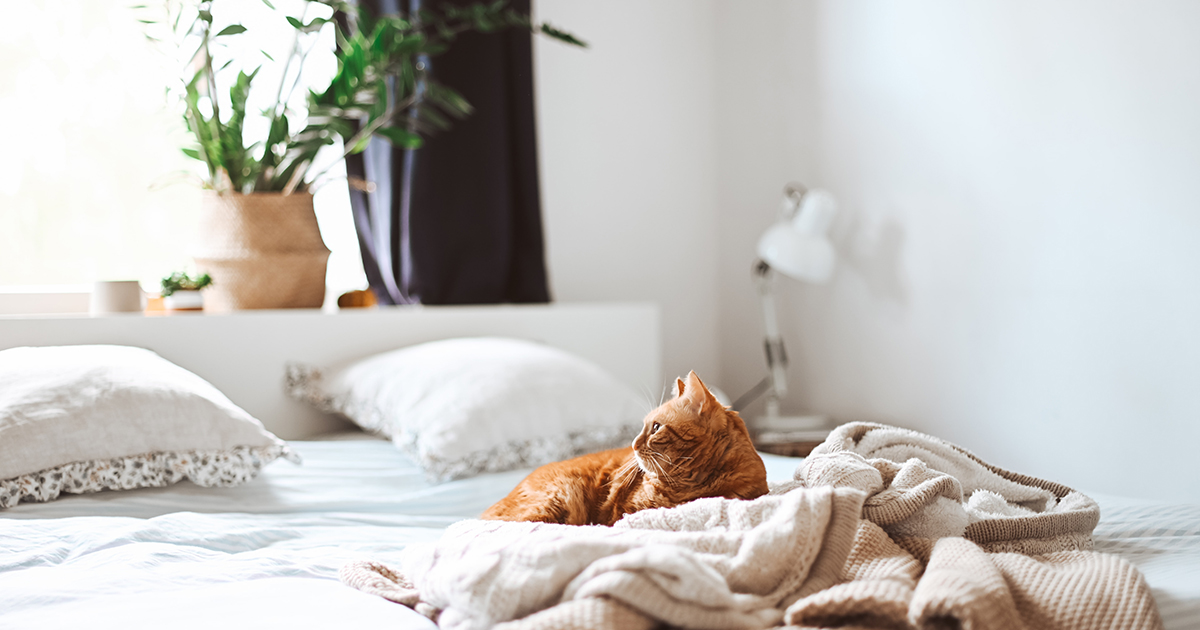Picture a first aid kit. It’s easy to imagine, right? It’s a little box with bandages, disinfectant, pain medication, etc. These kits are great for dealing with small scrapes and sprains. And although they can’t typically fix more serious injuries, they can tide us over until we’re able to get the help we need.
A mental health emergency kit functions in the same way but for your emotions. And it can be key to getting through hard times.
What’s a mental health emergency kit?
Simply put, a mental health emergency kit is a first aid kit for your emotions and moods. It’s a list of reliable resources, objects, and people that you can turn to when you notice a bad mood coming on or when a stressor threatens to derail your day.
“Whether you’re going through something big, like a breakup, or just having a bad day, a mental health emergency kit can help you cope with all the complicated feelings that surface,” says Sarah Dolling, LPC, Clinical Content Producer at AbleTo. “The tools in your kit may not turn your pain, sadness, or whatever you’re feeling into joy, but they can stop you from feeling worse and help you maintain a sense of control.”

Achieve your mental wellness goals
AbleTo programs give you 24/7 access to tools, activities, and content tailored to your needs. Sign up or log in to start exploring.

What goes in a mental health emergency kit?
You likely already have some tools in your kit, whether you’ve labeled them that way or not. Think about the last time you coped with a hard day. Did you turn on some music? Watch a favorite TV show? Call a friend? These are all tools in your kit.
Your kit is unique to you, but there are a few standard guidelines that can help you create it. To get started, choose at least one item for each of the following categories:
Something calming
First aid kits include both bandages and disinfectants but the order in which we use them matters. For instance, if we scrape a knee and bandage it before washing it, it could become infected, and it may take longer to heal.
Mental health can work the same way. So think of your calming object as a disinfectant. It’s best to try to use it first, instead of going straight for a distraction, so you don’t miss out on the chance to do something healthy ahead of your recovery.
Something calming could include:
- 5 minutes of journaling: Try the Freewrite Journal if you want to keep your venting totally private
- Meditation: AbleTo’s Let Go of Judgment meditation is great if you want to mentally recenter.
- Progressive muscle relaxation: This practice is pretty simple. To do it, lie on your back and clench and release each of your muscles one by one until your whole body relaxes. Prefer an audio guide? Our Easing Tension meditation will walk you through it.
Something warm and cozy
This one is pretty subjective, but it should be something sensory-based that feels like a hug or a deep sigh of relief. For some people, the best way to achieve this feeling is by sipping a warm cup of tea. For others, it’s snuggling with a pet. For others, it’s listening to a favorite playlist.
You get the idea. Think of your creature comforts and put them on your list. And if you’re thinking, “I can remember to make a cup of tea when I’m stressed, thanks,” add it anyway. Even if it’s easy, the simple act of referencing your kit and going through the motions can provide a sense of control and grounding.
Your happy place
This tactic is often used during different types of therapy. It involves creating a mental safe haven that you can go to in times of stress.
For your happy place, it’s important to create a rich environment. Here’s an example: My personal happy place is in a hammock on a warm day with my cat lying on my chest, purring.
When I’m really stressed, I think of this place not just visually, but physically too. I hear the purrs as well as the birds in the trees. I can feel the warm sun on my face with a gentle breeze. I can see my cat’s belly softly rising and falling with his breath. The hammock swings ever so gently. I don’t have a care in the world.
If you have a literal picture of your happy place, or of somewhere that reminds you of it, add it to your mental health emergency kit. A visual, like a photo or a drawing, can sometimes help bring you to your place more quickly.
Something you enjoy
We never want to ignore what we’re feeling, but sometimes engaging in a healthy distraction can help us get through overwhelming emotions by pulling our attention elsewhere.
Think of an activity you really value and add it to your kit. It could be listening to music, running, or even just lying outside and watching the clouds go by. Nearly anything goes as long as it enriches your life and brings you pleasure.
Someone you trust
Sometimes we just need to talk to another human. Talking can help to bring us back to earth and remind us of what’s real versus the story we’re telling ourselves in a cloud of stress.
You can add as many people as you want to your kit. I have a person I call when I’m Big Sad, a couple of different people I text when I really need a laugh, and then yet another person to call if I’m worried I’m about to have a panic attack.
Your person could also be a coach, your therapist, or even a hotline like the 988 Suicide & Crisis Lifeline.
Anything else I should know?
For some of us, medication will also be a part of our mental health emergency kits, so don’t forget to put it on your list. Be sure to always keep up with your refills, take as prescribed, and keep your doctor’s phone number stored in your contacts.
Most important, however, is to use your kit. So put 10 minutes or so on your calendar (if that helps) to put together your list. Save it where you’ll remember it. You can add items to your Freewrite Journal, create a note in your phone, or even write it down on a piece of paper to keep with you.
Then, the next time you’re feeling stressed or sad or worried, open up your kit and use your tools. Or, build them into your everyday routine: You don’t have to wait until you’re struggling with an overwhelming emotion to practice self care. Our emotions deserve to be tended to in the same way we care for our bodies, so we can feel better, faster, in every way.
Need help putting these tips into practice?
You may be eligible for virtual therapy, coaching, or on-demand self care from AbleTo. Each program is designed by clinicians and grounded in science. Sign up today and get the support you deserve.
By Kelton Wright
Kelton Wright is an author, editor, and athlete passionate about helping people live happier lives. She’s taught mindfulness to NFL coaches, led hundreds of women through cycling clinics, written an Amazon bestseller on dating, and worked with brands like Runner’s World, Rapha, Headspace, Teen Vogue, Bicycling magazine, Thrive Market, Skratch Labs, Peloton Magazine, and more all with the mission of empowering others.
Clinically reviewed by Sarah Dolling, LPC, Clinical Content Producer at AbleTo.
Photo by Gaelle Marcel/Unsplash.
The information featured on this site is general in nature. The site provides health information designed to complement your personal health management. It does not provide medical advice or health services and is not meant to replace professional advice or imply coverage of specific clinical services or products. The inclusion of links to other websites does not imply any endorsement of the material on such websites.


